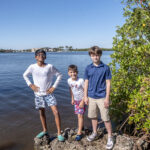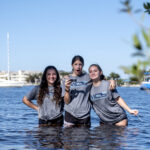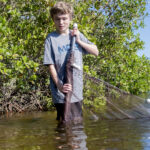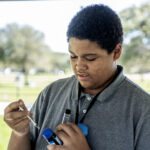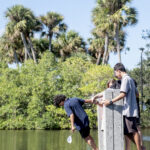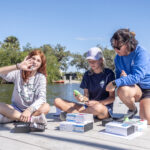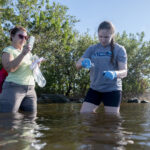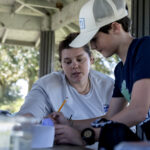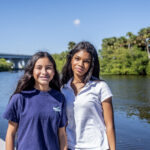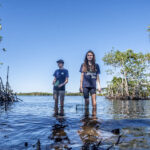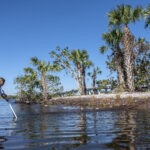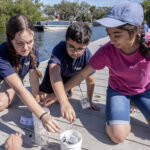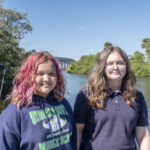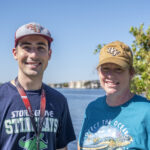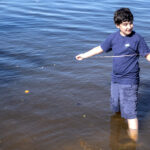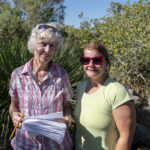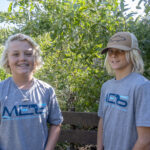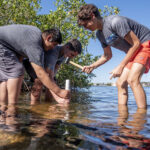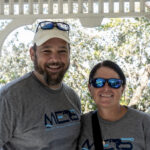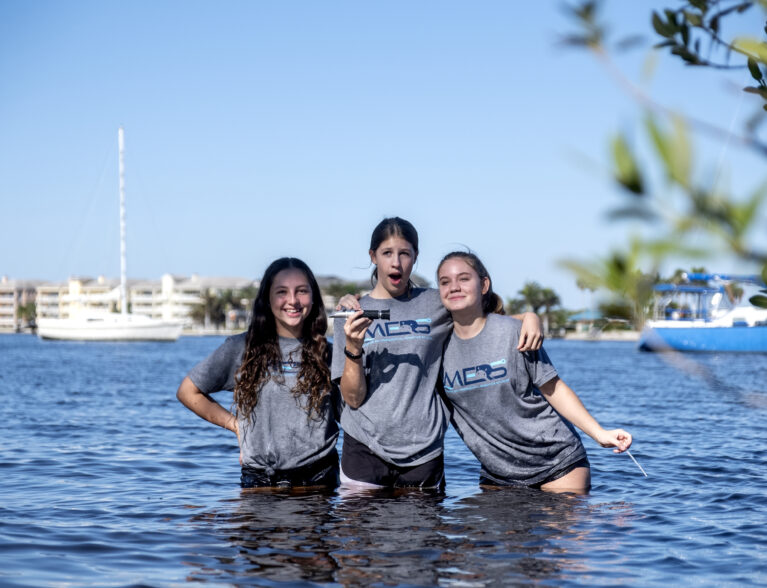
Citizen Scientists made a big splash during the fifth annual A Day in the Life of the Indian River Lagoon event hosted by the Ocean Research and Conservation Association. Thousands of participants, including volunteers, students from 36 schools, and partners from more than 30 environmental organizations, collected water quality data and conducted biological inventories at 50 locations along the 156-mile Indian River Lagoon, from Volusia to Palm Beach County.
In Indian River County, data was collected at nine sites by volunteers and students from area elementary, middle and high schools with the assistance of professionals from the Environmental Learning Center, St. Johns River Water Management District, Florida Fish and Wildlife Conservation and ORCA. The overall goal was to evaluate the health of the lagoon.
“The students are working alongside environmental experts and professionals in the field. They are learning about what those professions are like so that if they ever wanted to step into the world of STEM (Science, Technology, Engineering and Math), they have this person they can reference,” said Missy Weiss, ORCA’s director of Citizen Science and Education.
Students spent the morning assessing the chemical, physical and biological parameters of the lagoon, conducting a comprehensive study of the water’s temperature, salinity, dissolved oxygen, pH, nitrates, phosphates, and the biological inventory of the organisms that live at the various sites.
A Day in the Life is one of four citizen science projects undertaken by the nonprofit to realize its mission to protect the lagoon through science, restoration, advocacy and education.
A Land to Sea project works to restore living shorelines by planting native vegetation to create buffered coastlines. Their Pollution Mapping project has volunteers assist with monitoring and conservation to understand the depth of the damage done to the lagoon. And the One Health – Fish Monitoring project assesses the toxin transferal from the lagoon to humans and animals.
The Citizen Science program is based on the premise that educating and engaging the community about the root causes of the degradation of the lagoon and its connecting waterways, will “drive change and solve the problems.”
“This is year five,” said Weiss. “Now we can start looking at those sites which have been with us since year one and start looking and seeing and documenting any changes, whether for the better or worse, to see how they may have improved or otherwise.”
The participating students not only get hands-on and feet-wet experiences in scientific research, Weiss said, it also enables them to connect with the lagoon.
“Many of these students have never stepped foot in the Indian River Lagoon, let alone known that it is the waterway they drive by every day.”
Through Citizen Science projects, students are able to utilize the skills they learn in science classrooms by applying them to real-world science.
“It’s a huge opportunity for students to collect science research that matters and connect with why it’s so important and valuable,” said Weiss.
“When they see dolphins swim by, watch pelicans dive, and collect fish in the seine net, it becomes a little more real as to why it’s important.”
Once all the participants have compiled and submitted their data, it will be available for viewing at TeamORCA.org.
Photos by Joshua Kodis
- Param Patel, Leland Middleton and Jeffrey Howard
- Juliette McLean, Kenna Vitter and Macey Miller
- Mason Neocker
- Terrence Porter
- Trenton Bell and Cole Yousefi
- Alexis Zanni, Katie Bender and Lauren Hall
- Marylou and Annabell Robins
- Laura La Beur and Gavin Davis
- Virginia Barradas and Zavianna Carroll
- Quinn Gagnon and Violet Love O’Dell
- Regan Sassan and Raina Skinner
- Alonna Antinozzi, Nathan Garcia and Bithy Kundu
- Juliana Sullivan and Eryn Lawson
- Kaleb Post and Ashley Rollin
- Jaydon Holland
- Julianne Daniels and Marylou Robins
- Duke Thompson and Noah Ferrelo
- David Del Angelo,Cross Fecca, Koa Cromer
- John Martin and Marianne Thomas

